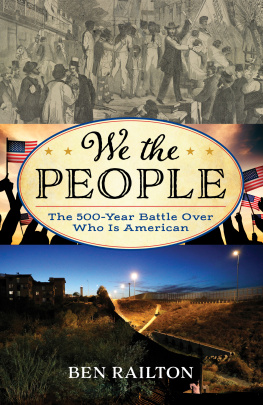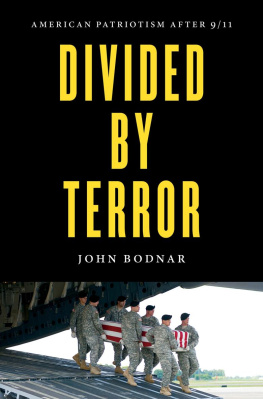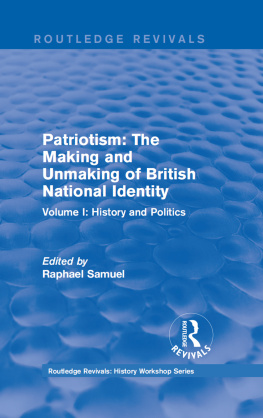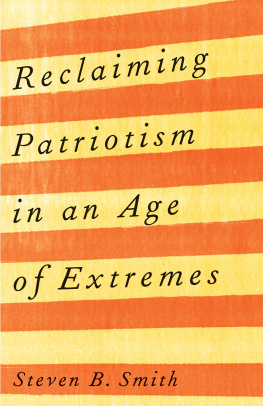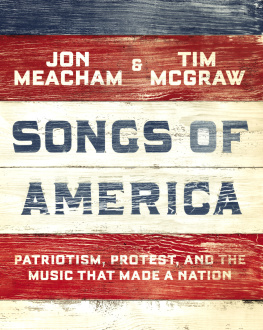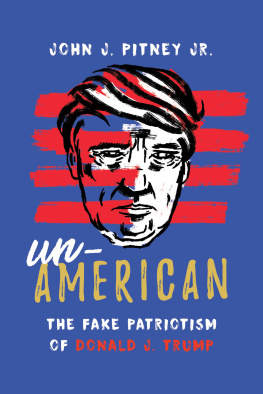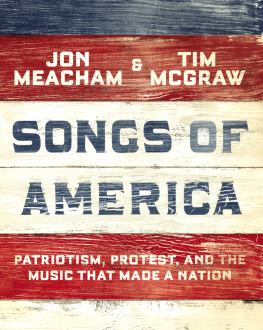Contents
Guide
This book was finished during the strangest and most stressful time Ive ever lived through. That moment continues to unfold, and its fair to say I have no idea into what late 2020 America and world Of Thee I Sing will be published. Anything I could say here about those subjects would feel incomplete and quite possibly irrelevant in a few months time, so Ill focus here instead on a few of the many communities for which Im profoundly grateful, now more than ever.
That starts with my professional homes for 15 years, Fitchburg State University and its English Studies Department and American Studies program. Ive learned a great deal from all my colleagues there, especially DeMisty Bellinger-Delfeld, Judy Budz, Chola Chisunka, Katy Covino, Christine Dee, Steve Edwards, Lisa Gim, Sean Goodlett, Patrice Gray, Michael Hoberman, Aruna Krishnamurthy, Kate Jewell, Irene Martyniuk, Joe Moser, Tom Murray, Kisha Tracy, Diego Ubiera, Heather Urbanski, and Ian Williams. Ive learned even more from the more than 3,500 students Ive taught in that time; that includes far more particularly influential individuals than I could ever acknowledge in a sentence or two here.
My professional communities extend far beyond FSU, of course, as do the individuals for whom Im especially grateful. With the New England American Studies Association, that includes Elif Armbruster, Akeia Benard, Nancy Caronia, M. M. Dawley, Luke Dietrich, Dan Graham, Sara Sikes, and Jonathan Silverman. With the Northeast MLA, it includes John Casey, Hilda Chacn, Maria DiFrancesco, Indigo Eriksen, Carine Mardorossian, Brandi So, and Claire Sommers. With the Scholars Strategy Network, it includes Ross Caputi, Tiffany Chenault, Dominik Doemer, Avi Green, Parastoo Massoumi, Ben Miyamoto, Danielle Mulligan, and Natasha Warikoo. My Saturday Evening Post column and work with Jen Bortel remain shining lights in my online writing life. I could genuinely acknowledge every single member of the #twitterstorians and broader Twitter scholarly communities, but will highlight just a fraction: Ariella Baker-Archer, Kassie Jo Baron, Danielle Cofer, Christina Proenza Coles, Robin Field, Dana Gavin, Sara Georgini, Rob Greene, Donna Harrington-Lueker, Erika Lee, Kevin Levin, Sheila Liming, John Edwin Mason, Keri Leigh Merritt, Meg Mulrooney, Megan Kate Nelson, Ashley Rattner, Heather Cox Richardson, Robin Jewel Smith, Greg Specter and the PALS crew, Jessica Thelen, Matthew Teutsch, Jana Tigchelaar, Kait Tonti, Laura Vrana, and Serena Zabin.
Theres a reason why this is my second straight American Ways book, and third straight with Rowman & Littlefield. That reason is first and foremost Jon Sisk, but also includes Dina Guilak, Jessie McCleary, Chelsea Panin, Stephen Ryan, and John David Smith, along with everyone else with whom Ive been fortunate to work with through R&L.
Steve and Ilene Railton, you know by now how much I owe to and have learned from both of you, but Ill never get tired of saying it here. Steve Peterson and Jeff Renye, ditto with your enduring and inspiring friendships. By far the best thing about my scholarly work over the last couple years has been my increasing ability to share it with Aidan and Kyle Railton. Indeed, I would argue that you two have really been co-contributors to this project at every stage and in every way, and it is infinitely better and stronger for your voices and ideas and perspectives and support, as am I.
On March 23rd, 1775, a 38-year-old attorney, planter, and delegate to the Virginia House of Burgesses named Patrick Henry (17361799) rose to give a speech at the Second Virginia Convention. That convention, held from March 20th23rd at St. Johns Episcopal Church in Richmond in order to maintain distance from the colonys royal governor Dunmore and his administration in Williamsburg, was the second in a series of meetings of delegates and other civic leaders to debate the question of independence for Virginia and the colonies. Henry had proposed that the colonists raise a militia that would exist separate from the English army and government, and some of the conventions more moderate attendees had spoken out against that proposal as too belligerent and likely to increase the chances of war.
Henrys speech became famous, and a rallying cry for the incipient revolution, due to his closing line: I know not what course others may take; but as for me, give me liberty or give me death! But whats particularly striking about the speech is that Henry frames his revolutionary sentiments through an initial lens not of liberty but of patriotism. He opens by making his disagreement with his fellow delegates about precisely that topic, his vision of patriotism in response to theirs: No man thinks more highly than I do of the patriotism, as well as abilities, of the very worthy gentlemen who have just addressed the House. But different men often see the same subject in different lights; and, therefore, I hope it will not be thought disrespectful to those gentlemen if, entertaining as I do, opinions of a character very opposite to theirs, I shall speak forth my sentiments freely, and without reserve.
Moreover, Henry makes clear that he sees his responsibility to offer such sentiments as itself an expression and exemplification of patriotism. Should I keep back my opinions at such a time, through fear of giving offence, he admits, I should consider myself as guilty of treason towards my country. Given that Virginia (like all the colonies) was still part of England at this time, and Henry thus a subject of King George like every other Virginian, he here reframes the interconnected concepts of patriotism and treason in a particularly bold and crucial way. That is, while he goes on to argue that freedom is the glorious object of our contest, he frames the battle to attain that freedom, the noble struggle in which we have been so long engaged and of which his own speech becomes a part, not just as an opposition to one nation, but also and especially as a patriotic embrace of another, new nation.
Henrys support for independence was one of many expressions of the American Revolution as an act of collective, celebratory patriotism toward the new United States. In framing documents like the Declaration of Independence, argumentative broadsheets like Tom Paines pamphlets, and influential individual perspectives like Ben Franklins, such celebratory patriotism became an integral element of the unfolding Revolution. Revolutionary celebratory patriotism also depended upon and deepened myths of Americas history and identity, as illustrated by the poetic odes of Phillis Wheatley, Philip Freneau, and Joel Barlow. Yet the Revolutionary era also featured central examples of active patriotism, both in the wars courageous sacrifices and in the constitutive debates and documents that were its ultimate outcomes. And whether from Loyalists offering a distinct vision of Revolutionary patriotism or feminists and abolitionists fighting for those too often left out of the new nations ideas and ideals, the eras histories and debates also modeled the presence and power of an alternative, critical form of American patriotism.
It stands to reason that in order for leaders of a colonial community to start a revolution to establish national independence, they would need to embrace celebratory patriotism, a vision of that new nation as truly worthy of such a bold action and the many costs and sacrifices it would necessarily entail. While the arguments for independence would certainly need to include the problems and failures of the colonies current situation and relationship with England, they would also and especially have to feature a positive embrace of the new nation that could be created once that link was severed. The Declaration of Independence, the statement of the colonies revolutionary intent drafted by Thomas Jefferson, revised by the delegates of the Second Continental Congress (17751776), and ratified and signed between July 2nd and 4th, 1776, embodies those multiple layers, delineating the colonists many complaints against England and King George but framing them with a celebratory patriotic vision of America.


